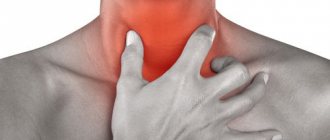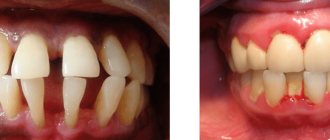Headaches and severe eye pain may indicate a serious problem and ongoing illness. Pain receptors can be located in veins, blood vessels, and the lining of the brain. Therefore, it may seem that the head hurts on one side.
Painful sensations affect the eyes. Most often, the causes of pain on the right side can be from mechanical damage or migraine , in rare cases - tumors and malignant formations .
Attention! If the discomfort is very strong, you should consult a specialist and undergo an examination. After all, any, even minor, pain indicates a problem.
Causes of pain on the right side of the head and eyes
Of the main reasons, several main ones can be identified, but it is worth remembering that prolonged headache discomfort cannot be ignored, especially when it causes severe discomfort.
Main reasons:
- Severe fatigue and overstrain . Discomfort in the head, sometimes strong pulsation and discomfort in the eyes. May occur due to working at a computer or TV. This condition usually occurs in the morning or evening, and is accompanied by tingling in the temples and forehead.
- Various bruises ( blows, concussion ). Even a small blow can cause a concussion and further development of brain diseases.
- Eye diseases (glaucoma). Maybe in one eye, which causes a lot of discomfort. They usually cause the eye to tingle and become blurry.
- Incorrectly fitted glasses or contact lenses. If there is discomfort in one or both eyes, it can cause migraines, tearing and fatigue.
- Spasms of blood vessels . As a result of improperly performed physical exercises, a clamp or damage to a blood vessel can be created in the cervical spine. This will further cause discomfort in the head on the right side, as well as small hemorrhages, which cause migraines and discomfort on the right side. But at the same time, the patient feels nausea, lethargy, and inability to concentrate.
- Very often, athletes suffering from osteochondrosis suffer from headaches, as well as dizziness, neck discomfort, and pain in the eyes. Such symptoms can occur on the right or left, periodically weakening and intensifying.
Brain tumors, meningitis, pre-stroke conditions, and intracranial hematoma are also possible causes of discomfort.
Painful sensations from tumors do not depend on its size, but in addition to unpleasant sensations in the head on the right side, the patient:
- loses weight quickly,
- suffers from seizures
- In the morning the patient may feel nauseous.
Keep in mind! Migraines can occur in people between 25 and 45 years of age. In this case, the discomfort is reflected in one part of the head, affecting pain in the eyes.
This may cause a cramp or slight tingling in the limbs.
Migraines include a serious disease called hemicrania, which often affects women. The discomfort from such a disease is very strong, and externally, the pupils of the eyes become very narrow, and the eyes themselves become very red.
Pain in the right side of the head and right eye can also hurt due to an eye injury, as well as due to
an infectious disease .
And also for colds and breathing problems. If the vessels are damaged, a person who complains of discomfort on the right side of the head may also report pain under the right eye.
How to deal with facial numbness syndrome due to osteochondrosis
Osteochondrosis of the neck leads to irreversible changes in the vertebrae, which directly affect the general well-being of the patient and may manifest themselves in the form of symptoms that are similar to other pathologies. If discomfort occurs in the upper spine, or disruption of the normal movement of blood and lymph in the tissues of the head and face, it is necessary to conduct a comprehensive examination.
Why does the face go numb with osteochondrosis?
Unpleasant sensations, pain in the back and neck may indicate the development of osteochondrosis, which is formed due to the load on the vertebrae when the spine is in an uncomfortable, static-vertical position for a long time.
If there is damage to the vertebrae, cartilage and ligaments in the cervical region, then disturbances in the sensitivity of the skin of the face may occur, the normal mechanism of blood circulation may change, resulting in increased swelling. These symptoms appear due to changes that occur in bone cells during the development of the disease. Osteochondrosis is characterized by a decrease in the normal thickness of cartilage tissue, which leads to contact and friction of adjacent vertebrae. This can subsequently cause the development of inflammation, pinching of blood vessels, spinal cord nerves, and arteries.
These changes in the circulatory and nervous system of the body affect not only the normal functioning of the spine, but also respond with a burning sensation, numbness of the facial muscles, changes in tissue structure, and symmetry.
Diagnostic examination for osteochondrosis
The dangerous fact is that numbness and a burning sensation in the facial muscles can symbolize the spread of other diseases, for example, the brain, so if unpleasant symptoms occur, it is necessary to conduct a neurological examination.
Headaches and migraines, impaired facial symmetry, numbness, burning, tingling sensation, decreased muscle mobility can be manifestations of impaired blood flow in the brain, the development of tumor growths under the cranial bone, hemorrhage, and stroke. The difference is that in the presence of these symptoms of osteochondrosis, unpleasant manifestations on the face can go away when performing physical activity or, on the contrary, occur when staying in a certain body position for a long time. Also, with diseases of the spine, there is no disruption of mental functions or changes in mental activity, the patient maintains concentration, attention and clarity of thought.
Unfortunately, diagnosing and treating numbness of the facial muscles at home can lead to the progression of the disease. Therefore, it is especially important to conduct an X-ray and tomographic examination of the brain and spinal cord. This will reduce the likelihood of an incorrect diagnosis and help avoid many problems and complications by starting treatment on time.
Treatment of numbness of the facial muscles with osteochondrosis
The fight against the negative consequences of osteochondrosis of the cervical spine is carried out by a neurologist or vertebrologist, who are specialists in the field of diseases associated with the nervous system. As a rule, medications are prescribed after a comprehensive diagnosis, taking into account the individual characteristics of the course of the disease.
To combat disorders in muscle tissue and nerve endings on the face, it is first necessary to begin treatment for osteochondrosis:
- With the help of medications that reduce inflammation in the vertebrae and nearby tissues;
- Rubbing with ointments and creams that reduce pain;
- Medicines that restore the cartilage layer and strengthen joints.
An effective remedy is also a back and neck massage, which improves blood circulation and lymph flow to the brain, saturating and nourishing muscle cells on the face.
Author: K.M.N., Academician of the Russian Academy of Medical Sciences M.A. Bobyr
Treatment
It is worth noting! Before starting treatment for a headache, you need to undergo an examination by a specialist to identify possible causes of this condition on the right side of the head. To do this you need:
- Take an extensive blood test (such an analysis will show all possible deviations from the norm and the causes of frequent discomfort).
- Get a CT scan (CT scans can detect tumors or blood vessel problems).
- Get examined by an ophthalmologist . Even if you don't have vision problems.
Based on the test results and tomography data, the doctor will be able to prescribe treatment. If the pain continues for a short time, you can take painkillers .
Analgin, Spazmalgon, Citramon relieve pain well.
All these tablets quickly dilate blood vessels, eliminate spasms and pain.
If a person has a severe migraine , which creates severe pain on the right side of the head, then doctors recommend taking anti-inflammatory drugs .
Prevention measures
To avoid headaches and the causes that provoke them, you need to use the following preventive measures:
- rest and exercise;
- good sleep and frequent walks in the fresh air ;
- complete rest for the eyes ;
- proper nutrition , eating fresh vegetables and fruits;
- drink a lot of water , which saturates with oxygen and improves blood quality.
Massage, sauna, and going to the pool also have a very . These simple recommendations can be followed by every person.
Stay up to date! If you are faced with a migraine or headache, you can take a painkiller, but if the symptoms still do not go away, you need to seek help.
Facial pain: causes, diagnosis, treatment
Pain in the facial area can be dull or sharp, short-term or chronic, affecting only one side of the face or both. But the reaction to this pain is always the same: the desire to get rid of it as quickly as possible. Facial pain can be caused by injuries, neuropsychiatric disorders and infectious and inflammatory diseases. We invite you to learn more about the most common sources of facial pain and common symptoms.
Tooth abscess
Anyone who has had to deal with a tooth abscess at least once in their life knows firsthand what unbearable, incessant pain is. A dental abscess is an acute inflammation caused by a bacterial infection in the pulp (the inner part of the tooth that contains the nerves and blood vessels). Most often, damage occurs due to advanced caries, gum disease or mechanical trauma to the tooth. The most common symptoms include: constant throbbing pain, swelling of the face, redness of the gums, unpleasant taste in the mouth, and increased body temperature. Remember that an abscess is a serious disease, so if you have the above signs, immediately contact your dentist, who will help you get rid of the pain and prevent complications from occurring.
Dry socket
After the removal of one of the permanent teeth, a blood clot forms in its place, which serves as a barrier to infection entering the wound and promotes its rapid healing. However, if the blood clot is not fully formed, disintegrated, or washed out, bone tissue and nerves are exposed, which can result in a painful condition called dry socket. The symptoms of a dry socket and an abscess are similar: severe pain, facial swelling, bad breath, and fever. If these symptoms appear, you should visit the dentist or surgeon who performed the tooth extraction.
Temporomandibular joint dysfunction
The temporomandibular joint (TMJ) allows us to open and close our mouth. Anything that interferes with the normal functioning of the TMJ can cause facial pain. The causes of the disorder may be associated with involuntary clenching of the jaw and grinding of teeth, as well as malocclusion. Facial and TMJ pain often occurs as a result of arthritis, injury, and dislocation. If you notice any clicking, crunching, or pain when you move your jaw, visit your orthodontist as soon as possible. Drug therapy, physiotherapeutic treatment, massage and myogymnastics, wearing occlusive splints or mouthguards help solve the problem.
Headache
People who frequently experience headaches report that facial pain combined with a migraine or cluster headache can be very severe. Such pain usually affects one side of the head and face. Pain is usually concentrated around the eyes, although for migraine sufferers the pain may radiate to the teeth and jaw. For minor pain, over-the-counter pain relievers usually help, but if the pain gets worse, don't wait to see your doctor.
Sinusitis
Extensive facial pain, including dull pain in the upper jaw and teeth, can be caused by sinusitis (inflammation of the paranasal sinuses). Other common symptoms of this condition include nasal congestion, pressure around the eyes and cheekbones, swelling of the cheeks or eyelids, ear pain, bad breath and fever. Inflammation with sinusitis often causes toothache, since the roots of the upper molars are adjacent to the bottom of the maxillary sinuses. Sinusitis can often be treated with regular cold and flu medications, but if symptoms persist, be sure to contact your primary care physician or ENT doctor.
Trigeminal neuralgia
Trigeminal neuralgia (trigeminal neuralgia) is a chronic disease characterized by attacks of severe pain in the innervation areas of the trigeminal nerve, the largest cranial nerve that transmits sensory information from the face to the brain. Specialists at the Scientific Center for Neurology believe that trigeminal neuralgia most often occurs as a result of compression of part of the trigeminal nerve by blood vessels. As a result, even a light touch to the skin, for example, when applying makeup or while brushing your teeth, can provoke recurring pain attacks - from a slight tingling to extremely intense, shooting or stabbing pain. Injections, medications or surgery help relieve pain and prevent relapses of the disease.
Herpes zoster
Many of us had chickenpox (chickenpox) as children. After an illness, the virus remains latent in a person’s nerve fibers for many years, without causing any damage to his health. In the future, when the immune system is weakened or in old age, the virus may reactivate, which causes herpes zoster (shingles). The infection manifests itself in the form of rashes along the affected nerve endings. The patient begins to experience severe pain and a tingling sensation on one side of the body, headache and joint pain, fever and chills. Herpes zoster can also affect the nerves of the face, causing drooping eyelids, facial paralysis, changes in taste, blurred vision, or hearing loss. At the first signs, immediately consult a doctor who will help you alleviate the symptoms by prescribing a course of antiviral and potent anti-inflammatory drugs.
Since the causes of facial pain are very diverse in nature, the best way to get rid of problems is a comprehensive diagnosis of the disease. By carefully studying the symptoms, a therapist or dentist will be able to make the correct diagnosis and choose the most effective treatment tactics.
How else can you help yourself with these symptoms?
If you are at home, a good option would be to take a bath with pine needles or sea salt .
It is also important to try tracking your pain for two or three days. Pay attention to changes in the nature of the pain, at what time it occurs and where exactly.
If a symptom occurs on the right side of the head, the pain may occur due to an incorrect position during sleep , an incorrectly chosen and uncomfortable pillow.
And sometimes simply because of the bad habit of sitting with your head bowed for a long time , for example, at work. Eliminate these and similar, at first glance, unobvious factors, and if this is the case, then everything will soon pass.
Causes of pain under the jaw
There are many reasons for pain in the neck and/or jaw, and they can indicate various health problems. There are many structures in the neck area, the pathologies of which cause pain and serious discomfort.
Pathological changes in lymph nodes
There are many lymph nodes behind our ears, on our neck, and in the lower part of our jaw. And one of the diseases that leads to painful discomfort is called lymphadenitis. This is inflammation of the lymph nodes due to bacterial or other infections. It is accompanied by severe sharp pain in the neck, which will radiate to the jaw, and will also cause an increase in body temperature. Without treatment, lymphadenitis becomes chronic, and then constant fatigue, weight loss and general malaise are added to the elevated temperature. Another pathology may be tumors that appear on the lymph nodes. These are, as a rule, metastases that have penetrated from any organs affected by cancer. The nature of the pain varies, but weakness and weight loss also accompany this condition.
Glossitis
Another disease that is associated with an inflammatory process, but does not affect the lymph nodes, but the tongue. Signs of glossitis are a bright red color of the tongue, severe swelling of the tongue and lower jaw. There may also be purulent discharge from the glands in the mouth, pain radiating to the ear, jaw and neck.
Pharyngitis, tonsillitis, sore throat
These diseases can also cause pain. But at the same time, if your neck hurts, then the pain radiates not under the jaw, but into the throat. With a sore throat, the pain intensifies at the time of swallowing, and the person also develops all the signs of an acute respiratory infection or flu (ear pain, fever, weakness, lack of appetite, etc.). For acute pharyngitis
Possible inflammation of the lymph nodes.
Jaw fractures
A fracture in the lower part of the jaw occurs due to a strong blow, head injury or accident. Fractures can be direct or reflected, multiple, fragmented, displaced, open or closed, but in any case the person experiences severe pain, which is accompanied by swelling, hemorrhage and impaired chewing function. In case of a fracture, you should immediately consult a doctor.
Useful video
From this video you will learn why the right side of your head hurts and how to get rid of the pain:
A headache , especially on the right side of the head , can affect the quality of vision and cause severe pain - this is evidence of a serious illness that must be dealt with immediately .
Modern medicine can now positively solve the problems of tumors that have arisen or the consequences of serious injuries, only if you consult a doctor in a timely manner.
Functions of the facial nerve
The facial nerve innervates (provides communication with the central nervous system) the facial muscles, which are responsible for the movement of facial muscles and the expression of all our emotions. There are only 2 facial nerves: right and left, each of which is responsible for the corresponding half of the face. The facial nerve has five branches: the 1st branch innervates the muscles of the upper third of the face, the 2nd and 3rd innervate the muscles of the middle third of the face, the 4th branch is responsible for the movements of the lower third of the face and the 5th branch activates the facial muscle of the neck. – m. platysma. The facial nerve exits the skull as a single trunk through the stylomastoid foramen of the pyramid of the temporal bone. Division into branches occurs in the area of the parotid salivary gland. Violation of the integrity of the nerve will lead to paralysis of the facial muscles that it innervates. Accordingly, if the nerve damage occurred in the cranial cavity, in the canal of the temporal bone and also before the branches depart, then paralysis will manifest itself on the entire half of the face corresponding to the side of the damage. If one of the branches or several branches of the facial nerve is damaged, then paralysis will occur only in those areas where the muscles that innervate these branches are located. The most severe degree of paralysis of facial muscles is damage to the facial nerve at the level of the trunk.
How does facial paralysis manifest? Symptoms of facial paralysis
This manifests itself as follows: half of the face, or some part of it, does not express any emotions, there are no movements. A person cannot smile, be surprised, etc. At rest, asymmetry of the face is observed, and the side on which the facial nerve is damaged is lowered (the eyebrow, lower eyelid, corner of the mouth are lower, the cheek tissues sag). With facial expressions, the asymmetry intensifies. All this leads to a decrease in the social activity of people with this disease, and difficulties arise when communicating with people. But this problem is not only an aesthetically unsatisfactory appearance. There are also a number of functional disorders:
1) Impaired diction, the pronunciation of many sounds is difficult, speech is slurred, due to the lack of tone of the orbicularis oris muscle and the muscles of the buccal region; 2) Difficulty eating, especially liquids; 3) Difficulty brushing your teeth; 4) Drooling is not uncommon; 5) Complaints about the absence of tears, incomplete closure of the eyelids, which leads to the development of keratitis, conjunctivitis, which may result in the loss of the eyeball. In this case, quite often they resort to blepharorrhaphy (stitching of the eyelids), in which it is necessary to constantly use eye drops and ointments; 6) The opposite situation may also occur, in which there is constant lacrimation associated with the lack of adherence of the lower eyelid to the eyeball; 7) The appearance of difficulty in nasal breathing due to the fact that the nasal muscles do not work and a valve effect is formed.
All of the above symptoms significantly reduce the quality of life of a person with this diagnosis.
Causes of facial paralysis:
- Benign and malignant brain tumors, most often associated with acoustic neuromas;
- Diseases and neoplasms of the middle ear;
- Injuries and surgeries in the temporal region;
- Injuries and operations of the parotid region, which is often an iatrogenic complication when removing a pleomorphic adenoma of the parotid salivary gland;
- Malignant formations of the parotid salivary gland;
- Viral infections, including human herpes virus;
- Idiopathic lesions - Bell's palsy.
Treatment of paralysis of facial muscles
Treatment for paralysis of facial muscles cannot be delayed! In this case, time is running out! This is not due to the nerve itself, but to the changes that occur in the facial muscles. The nerve can be restored 25 years after the first signs of paralysis appear, but the ability to move muscles cannot be restored. Modern research shows that facial muscles completely lose the ability to contract after 2 years of lack of movement. Muscles that do not receive functional load atrophy, muscle tissue is replaced by fibrous tissue, and such tissues are not able to contract.
Operations performed for this disease:
Neuroplasty: masticatory nerve, hypoglossal, cross plastic, combination of methods.
This method is suitable for patients with a disease duration of no more than 1.5-2 years. The essence of this method is to reinnervate the facial nerve (the nerve that conducts the impulse is sutured to the “non-functioning” facial nerve) with another motor nerve (usually the masticatory nerve or hypoglossal nerve is used). The operation is performed using modern microsurgery. This operation is performed in a hospital under anesthesia and is classified as high-tech medical care (HTMC). The fibers of the working nerve grow along the facial nerve, so the impulse reaches the facial muscles and they begin to contract. As a result, facial movements appear and a certain amount of facial expression is restored.
The cross nerve is a nerve autograft taken from the sural nerve (n. suralis) through a mini-incision in the ankle area. This autograft is sutured to the facial nerve on the healthy side and passed through a tunnel (without visible incisions) and sutured into the facial nerve on the damaged side. Through this graft, a nerve impulse passes from the healthy side to the diseased side, causing the muscles on the damaged side of the face to move. In this case, the donor area (leg) does not suffer functionally, the function is not impaired. This method is often used in clinical practice in combination with other treatment methods.
The rehabilitation period takes from 4 months to 2 years. During this period, it is necessary to strictly follow the recommendations: daily myogymnastics, myostimulation, massage.
| Illustration of facial nerve neuroplasty using the masseteric branch of the trigeminal nerve: |
Autologous muscle transplantation (granus muscle, latissimus dorsi)
This method is suitable for patients with a disease duration of more than 1.5-2 years. The essence of this method is to transfer the muscle from the donor area (gracilis muscle - thigh, latissimus muscle - back) to the face, in which the vessels of the muscle flap are sutured into the vessels of the face using a microscope. Thus, this autograft is supplied with blood and “takes root.” The muscle is reinnervated through the masticatory (or hypoglossal) nerve and the cross nerve. This operation is performed in a hospital under general anesthesia, which is also high-tech. The transplanted muscle imitates contractions of the muscles of the middle zone of the face, that is, a smile appears. An invisible thin scar remains in the donor area, the function of which is not impaired.
The rehabilitation period takes from 4 months to 2 years. During this period, it is necessary to strictly follow the recommendations: daily myogymnastics, myostimulation, massage.
| Illustration of lean muscle autotransplantation: |
Autotransplantation of muscles (temporalis muscle).
This method is suitable for patients with a disease duration of more than 1.5-2 years. The essence of this method is to move the temporal muscle without disrupting its blood supply and innervation to the midface area, forming a nasolabial fold. This operation is performed in a hospital under general anesthesia. When this muscle contracts, a smile is formed. Also, this method achieves facial symmetry at rest. The rehabilitation period takes from 4 to 10 months. During this period, it is necessary to strictly follow the recommendations: daily myogymnastics, myostimulation, massage.
| Illustration of temporalis muscle transposition: |
Static facial correction.
This method is suitable for patients with any duration of the disease. Often used as an adjunct to previously described treatment options. The essence of this method is to move and fix the soft tissues of the face on the diseased side into a symmetrical position relative to the healthy side. The result is symmetry of the face at rest, movements do not appear (if this method is used separately, without combination with previously described methods). With this correction, threads, meshes, and fascia are often used for additional tissue fixation. The rehabilitation period takes from 1 to 6 months.
With all methods of surgical treatment, incisions are made, as in a facelift, in the scalp, along the natural fold in the pre-auricular area, behind the auricle. After such incisions there are no visible scars. The donor area, regardless of the method, does not suffer functional losses.










